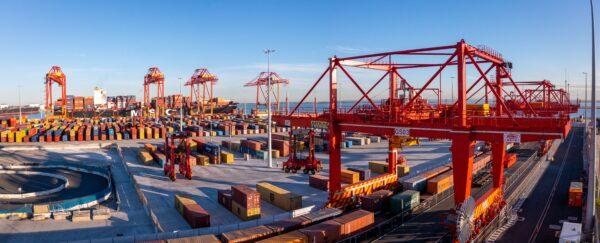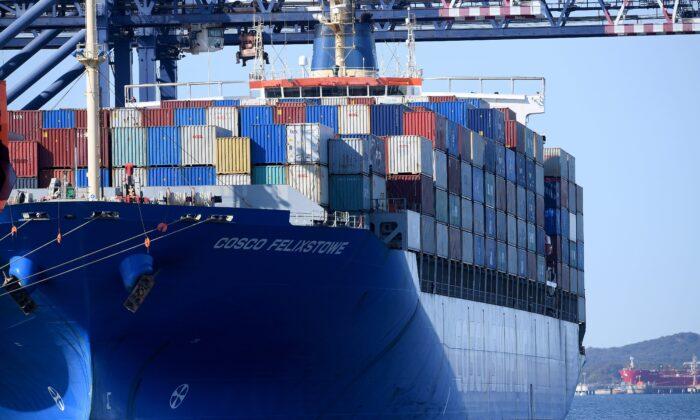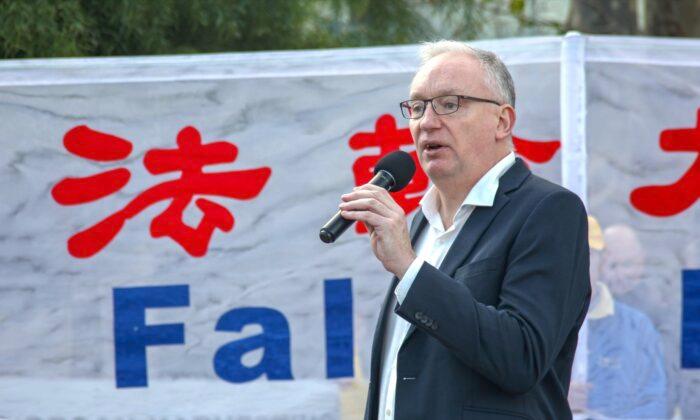The Australian consumer watchdog said the current global supply chain crisis is putting “intense pressure” on Australian exporters and importers, meaning people planning to import Christmas gifts should finalise their purchases early.
The Australian Competition and Consumer Commission’s (ACCC) Container Stevedoring Monitoring Report 2020-21 revealed that a number of Australian exporters are currently struggling to meet their contractual obligations.
Some large retailers were also resorting to buying their own shipping containers and chartering their own vessels to ensure their cargo would arrive by Christmas.
One stevedore told the ACCC that only 10 percent of vessels arrived in their designated berth windows in 2020-21, the lowest rate on record.
However, the issues with Australian port inefficiency began long before COVID-19, which only worsened the situation.
The ACCC cited a World Bank and IHS Markit study that ranked Australia’s largest container ports, Melbourne and Sydney, in the bottom 15 percent and 10 percent, respectively, of the 351 ports examined prior to COVID-19.
“We were told that some shipping lines were already withdrawing services from Australia before COVID hit. Australia needs to take decisive action to remain an attractive destination for global shipping lines,” Sims said.
Idle times in Port Botany, Sydney, have almost doubled during the pandemic, causing congestion so bad that some shipping lines choose to skip the port entirely.
Sims said the current little to no regulation of Australian container ports is not fit for purpose, and that regulation is needed to compensate for the lack of competitive pressure.
The report noted that the privatisation of four major ports in Australia appeared to have a positive impact on the timeliness of port investments. The ports are also more active in responding to customer needs.
However, it also led to a greater increase in rent to container terminals. For example, the Port of Melbourne, one of the privatised ports, is currently paying the country’s highest land rates of all container stevedores.
The report also looked at the ongoing disruptions caused by industrial action led by the Maritime Union of Australia (MUA).
“Industrial action on top of pre-existing congestion has, unfortunately, put enormous strain on our international container ports at a time when they can least cope with it, and in the case of Port Botany, some shipping lines have decided the delays make using the port commercially unviable,” Sims said.

For example, Hutchison Ports Australia’s agreement requires 70 percent of new recruits to be “family and friends” of existing employees or people chosen by the MUA.
The MUA was pushing for a similar agreement with Patrick Terminals’, who applied to terminate its enterprise agreement with the union last week, saying it restricted their ability to meet customer requirements amid current congestion.
“We are at the end of the road and need to have an agreement with our employees that works for our customers, and that allows us to remain competitive in the future market.”





